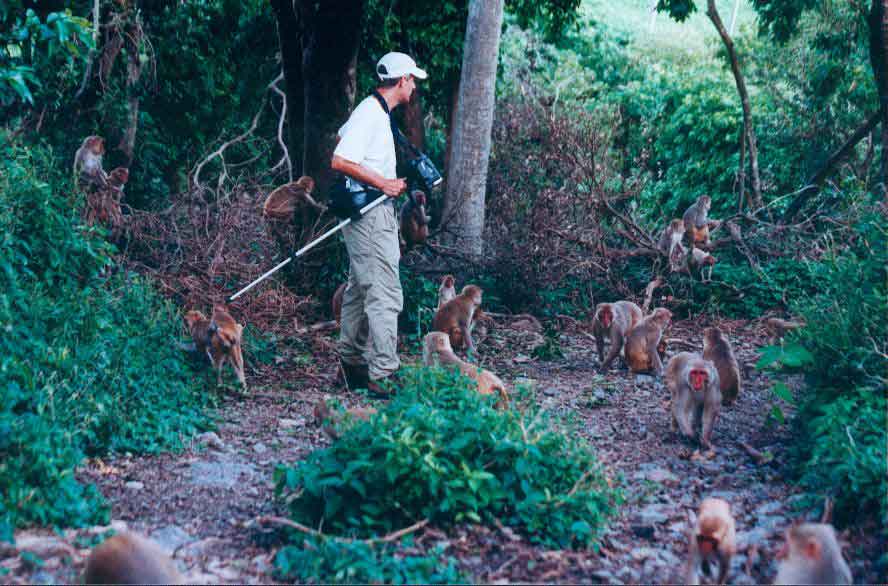

Attachment Bonds And Behavior In Free-Ranging Male Infant Rhesus Monkeys: Species-Typical Patterns And Individual Differences In Secure Base Use And Security.
Twenty-three free-ranging rhesus monkey male infants living in naturalistic conditions at Cayo Santiago PR were observed and sampled for more than 200 behaviors three times a week from birth through 10 months of age. Subjectsí were videotaped for two half-hours every 6 weeks so that their patterns of secure base use and attachment security could be evaluated with a 94-item Attachment Q-Sort (SBQS-RM). Infants, mothers, and close relatives were recognized individually; matrilineal genealogies were known; the relative ranks of mothers, matrilines and groups were determined during data collection.
The study evaluated how male infant rhesus monkeys used their mothers and others as secure bases from which to explore their social and physical environments. The SBQS-RM was based on the AQS for humans, and a scale with four quantitative variables were developed that validly indexed attachment security emphasizing attachment / exploration balance. All monkeys used their mothers as their primary secure bases, secure base use decreased substantially after three months, secure base use after three months was related less to protection or nutrition, and may have been related to affect regulation. Secure base use persisted throughout the 10 months of the study. No attachment bonds were formed with nonmothers.
Individual differences in secure base attachment security appeared in the first six weeks of development but increased after 3 months. Less security was associated with poorer assessment of risk, more exposure to risk events, slower acquisition of risk assessment skills, more distress, more time spent beyond 3m from mothers, more social play, more use of nonmothers as secure bases. More security was associated with more time in contact with mothers for infants that showed more distress, and more time off mother and nearby for infants that showed less distress.
Profiles of subjects that spent more time in contact, nearby, and at a distance were created using behavioral, cognitive, and affective variables. Infants that spent more time beyond 3m from their mothers had remarkably different profiles than infants that spent more time off their mothers but within 3m.
After 3 months of age, infants self-scratched less when in contact with their mothers than at other distances from mother. Infants gave significantly more distress calls and self-scratched more when they were within armís length of their mothers than at other distances from her. Subjects maintained a strong preference for being in contact or close proximity to their mothers based on their relative opportunity to spend time anywhere in their environs. Subjects appeared to prefer contact to close proximity even after 6 months of age.
Time spent in social play ranged widely among individuals. Social play was significantly higher among infants of primiparous mothers and in larger groups.
Jim now works at the Institute for the Study of Child Development at Rutgers University (details here), and at the Center for Economy, Environment and Society at Columbia University.
Publication based on dissertation:
- Warfield, James J.; Kondo-Ikemura, Kiyomi; Waters, Everett. 2011. Measuring infant attachment security in rhesus macaques (Macaca mulatta): adaptation of the attachment Q-Set. American Journal of Primatology 73: 109-118.